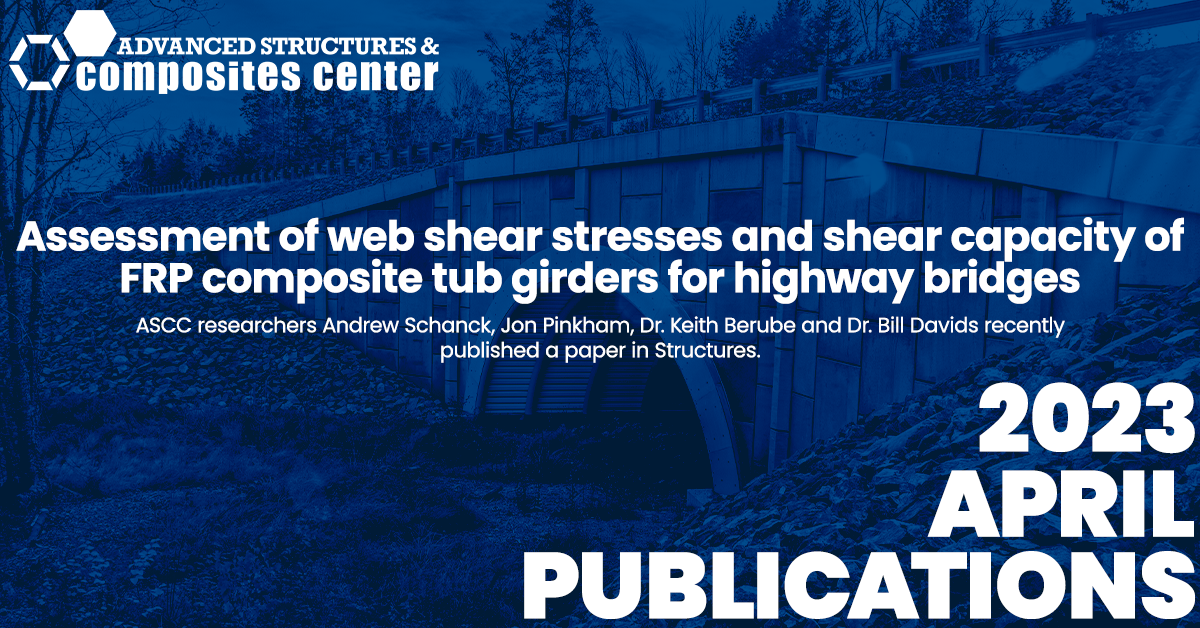
ASCC researchers published in Structures
Orono, Maine — ASCC researchers Andrew Schanck, Jon Pinkham, Dr. Keith Berube and Dr. Bill Davids recently published a paper in Structures.
The article, “Assessment of web shear stresses and shear capacity of FRP composite tub girders for highway bridges,” aims to characterize the shear strength, buckling resistance, and distribution of live load shears in fiber reinforced polymer composite tub girder highway bridges to improve the efficiency and safety of future designs.
Fiber reinforced polymer (FRP) structures are becoming more prevalent in infrastructure applications, particularly bridges. Researchers at the Transportation Infrastructure Durability Center have developed a FRP highway bridge girder designed to replace conventional steel and concrete girders. The results of this study provide insight into composite tub girder web shear behavior and suggest areas for future research.
Assessment of web shear stresses and shear capacity of FRP composite tub girders for highway bridges
Authors: Andrew Schanck, William G. Davids, Jon Pinkham, Keith Berube
Structures (2023)
Full Article
Received: 20 December 2022 / Revised: 15 March 2023 / Accepted: 15 March 2023
Abstract
Reinforced polymer composite tub (CT) girders are a novel solution as the main structural element of short to medium span highway bridges. These girders are lightweight and more durable than the steel and concrete bridges they are designed to replace. Although CT girders have been shown to behave well in flexure, significant questions remain as to the shear strength and buckling resistance provided by their foam-core sandwich webs, and regarding the distribution of shears under traffic live-load. Current practice is expected to provide conservative designs but could lead to inefficient material utilization, and few bridges have been placed in service to-date. In this study, CT girder sandwich web specimens were tested in near-pure shear in an attempt to assess their ultimate shear strength. The test results justify significant increases to the current web design strengths. A comprehensive suite of finite element analyses of typical girder webs was then analyzed to assess their shear buckling capacity. The analysis results were used to create design charts that provide critical web shear buckling loads for a range of web face sheet thicknesses, web foam core thicknesses, and web depths. Finally, a diagnostic field live load test of the first CT girder highway bridge placed in service is described, which focused on examining shear live load distribution. The results of this test indicate that the original design was reasonably conservative but demonstrate the need for live load distribution factors specifically tailored to the behavior of CT girders.
Keywords: Sandwich composites; Shear buckling; Distribution factor; FRP composite bridge girder
Assessment of web shear stresses and shear capacity of FRP composite tub girders for highway bridges
Structures (2023)
Contact: Katelin Moody, katelin.moody@maine.edu
